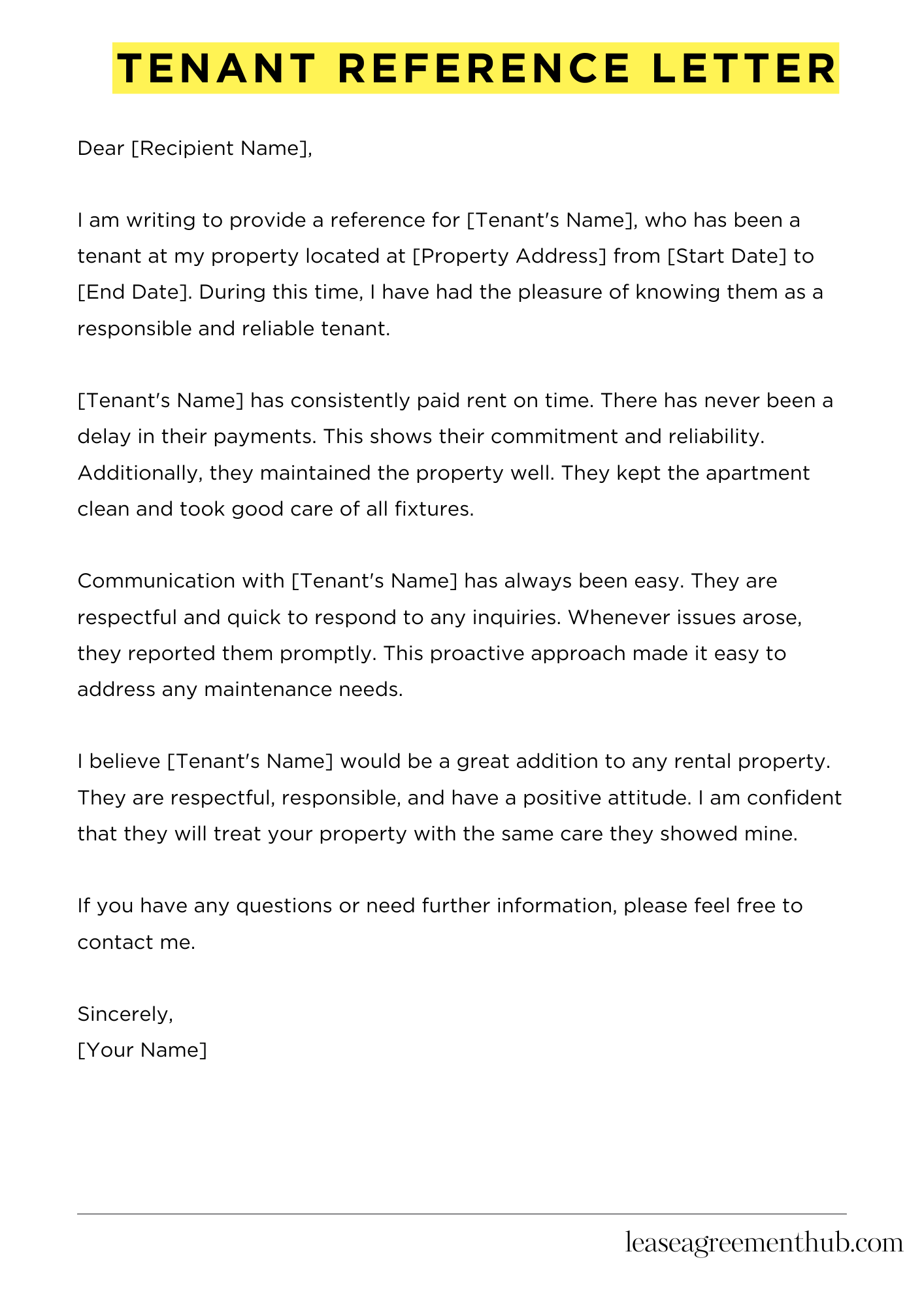A Tenant Reference Letter is a document that verifies a tenant’s rental history and behavior. It serves as a recommendation for future landlords. This letter can help tenants secure a new rental by showcasing their reliability and responsibility.
In this article, we will provide various templates and examples of Tenant Reference Letters. These samples will give you a clear idea of how to write your own letter. Our goal is to make the process simple and straightforward for you.
Whether you are a landlord or a tenant, having a well-crafted reference letter can make a difference. With our easy-to-follow samples, you can create a professional letter in no time. Let’s get started on making your rental experience smoother.
Tenant Reference Letter
[Your Name]
[Your Address]
[City, State, Zip Code]
[Email Address]
[Phone Number]
[Date]
[Recipient Name]
[Recipient Address]
[City, State, Zip Code]
Dear [Recipient Name],
I am writing to provide a reference for [Tenant’s Name], who has been a tenant at my property located at [Property Address] from [Start Date] to [End Date]. During this time, I have had the pleasure of knowing them as a responsible and reliable tenant.
[Tenant’s Name] has consistently paid rent on time. There has never been a delay in their payments. This shows their commitment and reliability. Additionally, they maintained the property well. They kept the apartment clean and took good care of all fixtures.
Communication with [Tenant’s Name] has always been easy. They are respectful and quick to respond to any inquiries. Whenever issues arose, they reported them promptly. This proactive approach made it easy to address any maintenance needs.
I believe [Tenant’s Name] would be a great addition to any rental property. They are respectful, responsible, and have a positive attitude. I am confident that they will treat your property with the same care they showed mine.
If you have any questions or need further information, please feel free to contact me.
Sincerely,
[Your Name]

How to Write Tenant Reference Letter
Understanding the Purpose of a Tenant Reference Letter
A tenant reference letter is a document that helps a prospective tenant secure a rental property. It provides insight into the tenant’s character and reliability. Landlords often rely on these letters to make informed decisions. A well-written letter can highlight a tenant’s positive qualities, making them a more attractive candidate.
Gathering Relevant Information
Before writing the letter, collect all necessary details. Start with the tenant’s full name and current address. Include the duration of their tenancy and the rental property’s address. It’s also helpful to note the tenant’s payment history and any maintenance issues. This information will give the letter credibility and context.
Structuring the Letter Effectively
The structure of the letter is crucial for clarity. Begin with a formal greeting, addressing the landlord or property manager directly. In the first paragraph, introduce yourself and your relationship with the tenant. The following paragraphs should detail the tenant’s qualities. Mention punctuality in rent payments, cleanliness, and respect for property rules. Conclude with a strong endorsement of the tenant.
Maintaining a Professional Tone
While it’s important to be friendly, a professional tone is essential. Avoid using overly casual language or slang. Stick to clear and concise sentences. This approach ensures that the letter is taken seriously. Remember, the goal is to present the tenant in the best light possible while remaining truthful.
Finalizing and Sending the Letter
After writing the letter, proofread it for any errors. Check for spelling and grammatical mistakes. A well-polished letter reflects positively on both you and the tenant. Once satisfied, send the letter directly to the landlord or property manager. You may also provide a copy to the tenant for their records. A good tenant reference letter can make a significant difference in securing a new home.
Related: